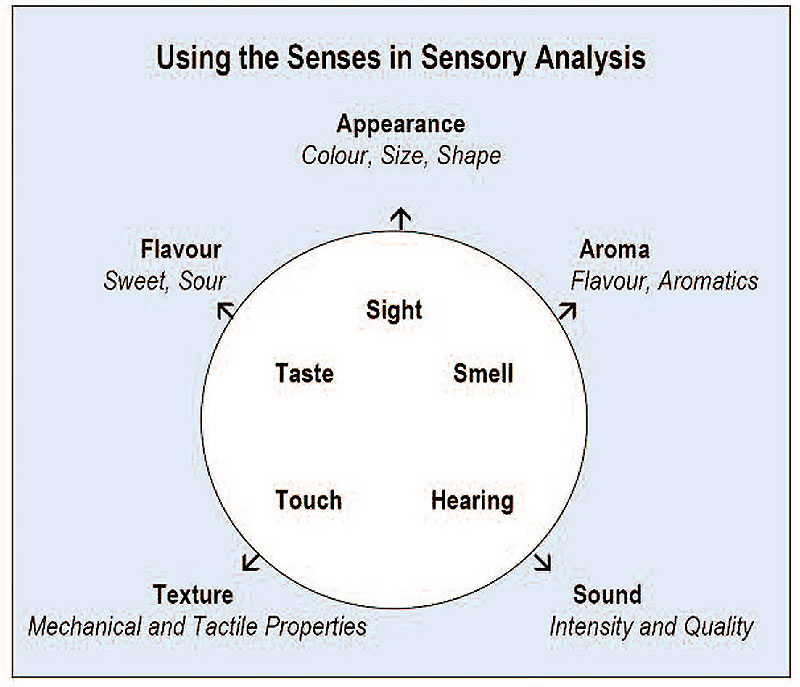Food sensory analysis is a scientific approach that is used to evoke, measure, analyze, and interpret human responses to food products. Senses which are perceived include sight, smell, touch, taste, and hearing, which are used to evaluated important food characters such as appearance, aroma, flavour, texture, sound, or others. Food sensory evaluation of products provides an understanding of the key sensory properties that drive consumer acceptability. It is becoming an important aspect of product quality control, new product development, as well as comparable market research.

Food sensory analysis is based on the principles of experimental design and statistical analysis. Experts at Lifeasible provide you with a wide range of sensory analysis techniques, including:
- Analytical sensory testing. This type of testing can obtain objective facts about products. Analytical sensory tests are the counterpart to analytical physical (instrumental) and chemical tests. They are used to measure differences and similarities among products and indicate the type and amount of the differences. There are two types of analytical sensory techniques, and the choice of technique depends upon the test objective.
- Discrimination testing. This test is also called difference test. It is used to evaluate whether two or more products differ from each other. Commonly used methods include triangle test, duo-trio test, paired-comparison test, tetrad test, directional difference test, “A” “not A” test, attribute ranking test, etc..
- Descriptive testing. This test is used to describe how products differ from each other, i.e. which attributes are different and the magnitude of the difference in each attribute. Descriptive testing is much more robust and more informative than discrimination testing. Lifeasible provides a list of methods for descriptive testing, including quantitative descriptive analysis, consensus profiling, flash profiling, free sorting, free choice profiling, napping, polarized sensory positioning, time intensity, progressive profiling, etc..
- Affective analysis. Affective analysis, also called hedonic or consumer analysis, emphasizes the subjective impression, such as the popularity of or preference for a product. The most widely known group of quantitative consumer tests are as follows:
- Preference testing. For this testing, consumers are presented with 2 or more samples and asked to indicate or rank their preference.
- Acceptance testing. It is also called degree of liking. Consumers are presented with products and asked to indicate their degree of liking on a scale.
- Conjoint analysis. This test is also known as trade-off analysis. It is based on the principle that when consumers make a purchase decision, they tend to make choices or trade-offs between independent (yet conjoined) attributes in a product. This analysis does not require actual products.
Being a team with sensory scientists, flavour scientists, food chemists, process and package engineers, and nutritionists, we can provide reliable and accurate sensory analysis to help you understand how specific ingredients, processes, packages, or storage conditions affect the sensory properties of foods. We can offer you one-stop food sensory analysis from study design, data collection, to statistical analysis and data report. Using both scientific and industrial standard methods, we can help you better satisfy your consumers with your food products. Please feel free to contact us for further information on our food sensory analysis services.
Reference
-
Professional development service for teachers (PDST), Sensory Analysis Teacher’s Manual, Dublin, 2017.
For research or industrial raw materials, not for personal medical use!
